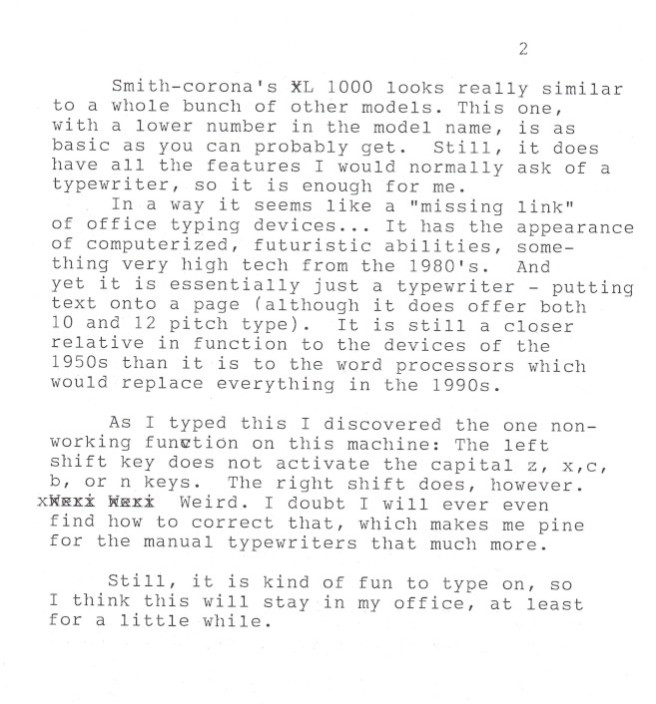
I’ve been a bit slow in blogging lately, but there’s been lots of typewriter activity going on here over the last few months – mostly acquisitions and maintenance!
Today I’m going to be playing with a really low-end typewriter while tasting a very high-end beer. Let’s see how these two contrast one another.
Smith-Corona’s XL 1000
Hear me out – I am insanely jealous of the people who waltz into their local thrift store and find a Hermes 3000 for $20. I never find typewriters at thrift stores. I don’t know if it’s because of bad timing and they’ve been picked over before I get there, or if it’s a Canadian thing, and these just don’t go to thrift stores?
At any rate, when I finally happened across a typewriter at Value Village, I snagged it… even though it was this one. It was such a low price that I figured I was willing to take a chance on it, even though it might not work at all.
The good news was that it worked without issue. Although the plastic case has yellowed significantly with age, the typewriter itself was extremely clean internally and externally. It had clearly been used, but with no evidence of abuse and not seriously worn.


To be perfectly honest, I don’t know how long this little electronic machine will remain in my collection. It lacks the handiness and immediacy of a portable, manual typewriter, in that you need to have access to an electrical outlet. And of course, it lacks a lot of the charm, too. Still, it gets words on paper, and it does produce nice looking type which is easily legible with Optical Character Recognition software.
Rodenbach’s Flanders Red Ale (Vintage 2016)
The Rodenbach family established this Flemish brewery in 1821. They make great beer, and it is exported widely, for which I am grateful! They claim their Red ale is “probably” the most award-winning beer in the world. It is easy to see why with this example.
This Flanders Red has been aged for two years in oak casks. When poured, the namesake colour is readily apparent, and I was greeted by a fragrant whiff of sour fruit. Tasting it reveals a nice, full-body mouthfeel, with effervescent carbonation.
This is big beer – a little bit strong, but huge in flavour! Starting with a bold, funky sweetness, it sure wakes up your taste buds. The sweet quickly transforms to a tart, fruity tang, and finishes rather sour. There is great complexity here, making it a truly interesting beverage for those that pay attention.
Truly delicious, and a highly recommended, special beer. Truly a stark contrast to the XL 1000 electronic typewriter.
Until next time, happy drinking and safe typing!






You could try spraying some electronic contact cleaner into the rotary sensor of the daisy wheel motor. It’s mounted on the same shaft as the motor, and provides feedback to the controller as to the current position of the daisy wheel. Then work the sensor by repeatedly typing upper and lower case characters. I had a similar problem with a Nakajima-made Olympia.
LikeLike